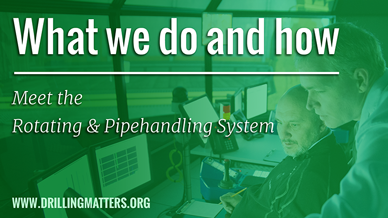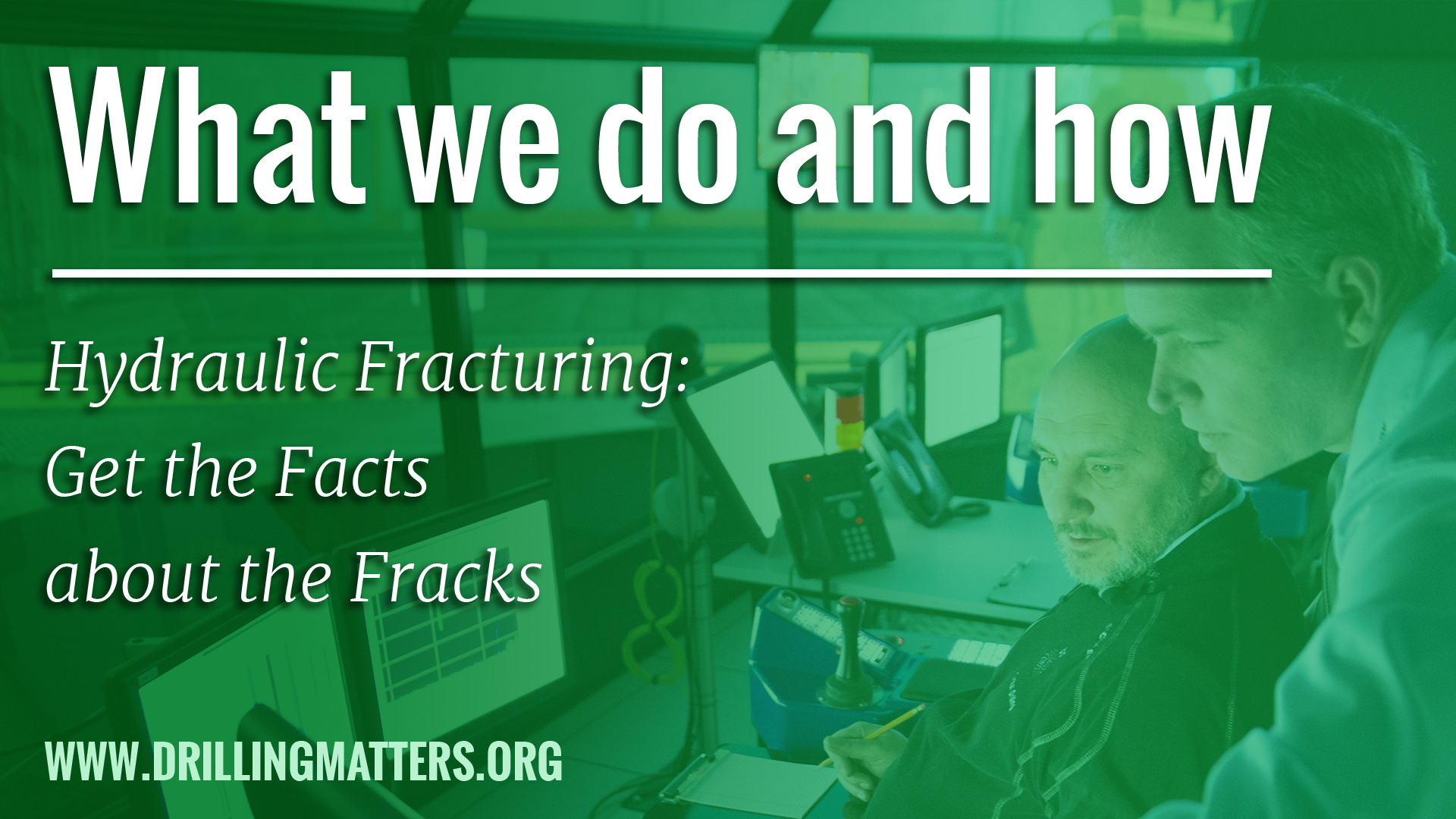
Meet the Drilling Rig
The drilling rig is a machine designed for a single purpose: To drill oil, gas and geothermal wells. Rigs are often purpose designed for special conditions, such as searing desert heat or frigid Arctic conditions, and that’s just on land! Similarly, offshore rigs have been ingeniously designed to drill in water depths from a couple dozen feet to more than 10,000 feet. This module will also distinguish between fixed, offshore production platforms and mobile, offshore rigs. Learn about the different types of rigs and how they function. Then, move on to other modules in this section.
A drilling rig is a complex piece of machinery designed for a single purpose — to drill oil, gas or geothermal wells.
Narration Transcript
The modern drilling rig is a complex piece of machinery designed for a single purpose – to drill oil, gas or geothermal wells. From today’s drilling rigs, wells can be drilled to subterranean depths greater than twelve thousand meters. The pinpoint precision of modern drilling operations can also land a horizontal well more than eleven thousand meters long, within a target of only a few meters. Offshore drilling rigs can accomplish such feats in water depths of ten thousand feet or even deeper.
It requires a high degree of precision to drill a well to such pinpoint accuracy – especially when the drilling takes place thousands of feet below the surface of the earth. This high degree of accuracy has been compared to the space program.
Most drilling rigs, whether land or offshore, are mobile and can be moved from location to location quickly and efficiently. Drilling rigs often work in hostile environments -- burning deserts, the Arctic or ultra deepwater.
Consequently, rigs are often designed for specific purposes. Let’s review just a sampling.
Rigs designed to operate under Arctic conditions are necessarily winterized, with heating and cooling systems for the rig floor, drill pipe, casing storage and other areas. Often, Arctic rigs are modular in design for simpler construction at the well site and can skid over short distances from well to well.
Conversely, desert rigs are equipped to operate in searing dry heat. Many of these rigs are specifically designed with oversize tires to traverse the roadless sands of the tough desert environment. These tires, which can be as large as twelve feet, or four meters, in diameter, allow the rig to be pulled to the next drilling location by truck or tractor.
More recently, “walking rigs” were developed for efficient drilling in unconventional formations where several wells are to be drilled within a small footprint. The bulk of the rig, including mast and substructure is able to walk short distance to the next location. These rigs require additional structural reinforcement, and feature complex designs.
The quest for offshore oil began in the early Twentieth Century, with wells drilled from fixed platforms. Early drilling platforms were simply piers out into the ocean, as this photo from California dated circa 1905 shows. Later, stand-alone platforms were developed, allowing drilling to take place in much deeper water.
Many different platform designs have been introduced over the decades, each stepping out farther into deepwater than its predecessor. Fixed platforms not only drill for oil or gas, but also produce the resource.
As technology developed, and drilling moved into deeper water, explorers designed platforms from concrete and/or steel, with legs anchored securely into the seabed. This photo shows a steel jacket ready to tow out to deepwater. Once the jacket is set into the seabed, the drilling rig and equipment are set into place. These types of platforms served well in water depths up to about thirteen hundred feet, or approximately four hundred thirty meters.
Platform rigs themselves are essentially of the same design and construction as typical land rigs, but are set up on large bottom-supported structures fixed into the seabed by any of several methods.
To reach greater depths, the tension-leg platform was invented. Tension-leg platforms are permanently moored in place by steel tendons. These types of platforms can operate in water depths approaching three thousand feet, or roughly one thousand meters.
The spar platform can drill and produce in water deeper than any other fixed installation. Among platforms, spars make it possible to drill and produce in the deepest water. The platform consists of a large-diameter, vertical cylinder supporting the drilling hull. The cylinder is permanently moored to the sea floor and is weighted at the bottom to lower the center of gravity and provide stability.
Most offshore drilling worldwide today is performed by mobile offshore drilling units, or MODUs for short. These drilling units are designed for specific water-depth ranges, from very shallow to as deep as twelve thousand feet, or approximately four thousand meters.
On the shallow end of the water-depth spectrum are posted barges. Barges are bottom-founded rigs, meaning that the vessel sits on the seabed.
Posted barges, which typically operate in eight to twenty feet of water, are simply elevated structures built above a barge. The barge will sink to the bottom of the shallow waterway when ballast water is taken on, leaving the main hull elevated above the water. The elevated section contains all personnel accommodations, power generation, liquid storage, mud pumps and other necessary equipment. The drilling package is usually located at one end of the barge.
The most versatile bottom-supported offshore rig is the jackup. These are the workhorses of shallow-water drilling. Jackups can operate in water depths up to four hundred feet, or approximately one hundred twenty meters.
Jackups are towed to the drilling location. Like drilling barges, jackups are bottom-supported machines, but with important differences. The upper hull of the jackup is supported by three or four legs.
However, instead of ballasting pontoons down to the sea floor for support, while the upper hull remains stationary, the jackup’s legs are lowered to the sea floor to support the vessel. Once the legs are satisfactorily set on the sea floor, the hull is literally “jacked up” and raised to a predetermined level above the sea, usually fifty to seventy feet. This is called the “air gap”.
Reaching water depths beyond jackup depths with a mobile rig means the rig must float. There are two types of these floating rigs – semisubmersibles and drillships.
Semisubmersibles are so named because, rather than completely submerging a lower hull, these rigs are designed to float. Thus, they are only partially, or “semi-submerged”. Hence the name.
Semisubmersibles come in many shapes and sizes, but their ability to float while drilling is their defining characteristic. The upper hull is supported by vertical columns. Unlike the jackup, however, these columns are supported by a pair of submerged pontoons or by a single ring pontoon. Semisubmersibles are either moored on location or use computerized systems to manage the rig’s propellers and thrusters to maintain location. This is called dynamic positioning.
Usually, fuel is stored in the pontoons, while personnel accommodations, power generation, equipment storage, and, of course, the rig’s drilling equipment, all reside on the upper hull.
These types of rigs are typically used in water depths from one thousand feet to four thousand feet. Some semisubmersibles can operate in ultra-deep water, beyond seven thousand feet of water.
The last type of offshore rig is the drillship. As the name implies, these are ship-shaped vessels that drill. Like the semisubmersible, drillships are either moored on location or equipped with dynamic positioning systems.
Drillships feature a derrick amidships, with a moonpool directly beneath it. The moonpool is a rectangular opening in the middle of the ship used to lower drilling tools and equipment into the sea. Semisubmersibles also feature moonpools. One can stand at the edge of the moonpool and stare at the sea below.
Today’s modern drillships are among the most technically advanced offshore rigs. They boast the greatest water-depth capacity of all offshore rig types. Thanks to their ship shape, drillships boast a much larger carrying capacity than any other offshore rig type. This enables them to carry enormous quantities of pipe and supplies. For example, an advanced, ultra-deepwater drillship can accommodate more than twenty-two tons of cargo, while an advanced semisubmersible will top out at less than nine thousand tons.
These characteristics make drillships the rig of choice for drilling activity in areas with limited infrastructure, few or no supply bases, and so on.
That’s the rig! Please take a few minutes to review the short videos on basic rig systems, as well as our interactive rig diagram.









